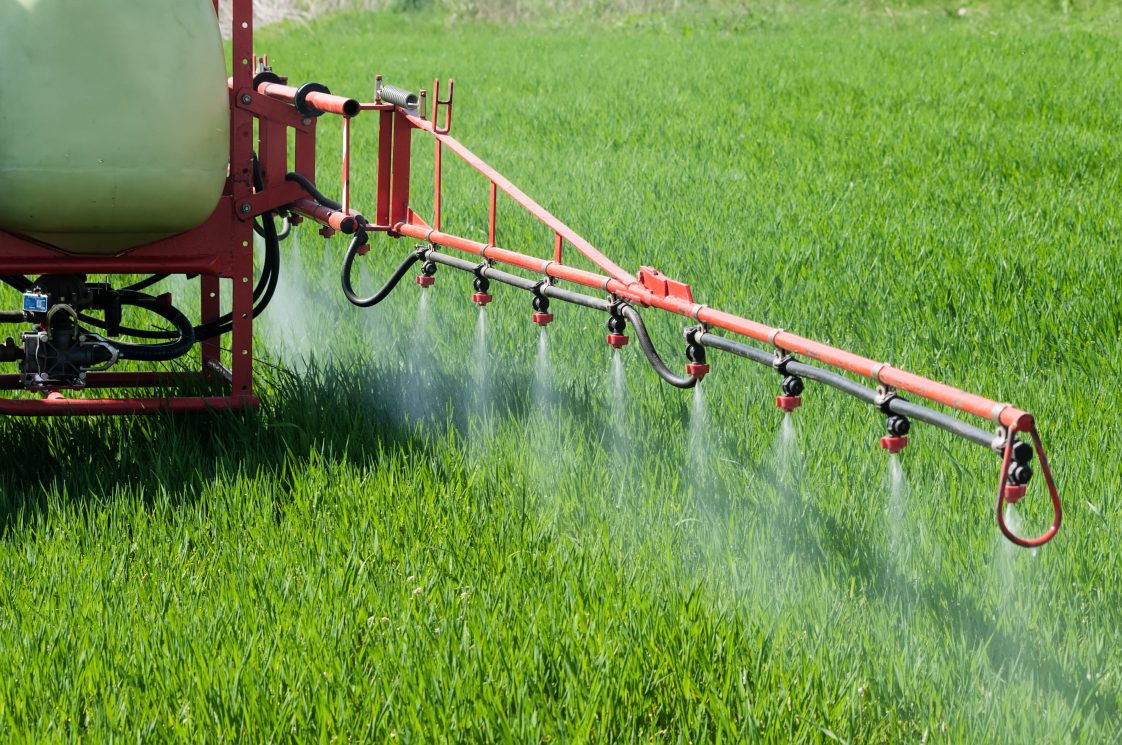Farming

Sprayer calibration is an important step when applying pesticides and should not be overlooked. A lot of different sprayers can be used in agriculture, including some common types such as boomless applicators, air blast applicators, and handgun applicators. The following information outlines the process for calibrating a boom sprayer.
Determining Pesticides Per Acre
Boom sprayers are used to make broadcast applications of pesticides to large areas, such as fields. Read the label for all pesticides before purchasing and applying them. The pesticide label is the law, and applicators should follow all label directions. Labels explain how much of the pesticide to apply per acre, as well as the gallons of water needed per acre, as recommended by the manufacturer. It is common for a pesticide label to recommend a range of 10 to 40 gallons of water per acre. For boom sprayers, operating pressure, nozzle size and spacing, and operating speed determine the volume of water applied per acre. So, how much pesticide do you put in a tank? First, you need to determine how many gallons of water you are applying per acre. Then, you can calculate how much pesticide to add to the tank.
Calibration Steps
The following are the steps for the 1/128 calibration method, but other methods can be used. While calibration is done only using water in the tank, personal protective equipment should still be worn while calibrating.
The first step to calibrating any sprayer is to check and clean the sprayer’s tips, filter, hoses, and pump to make sure they are all functioning properly. Over time, tips, pumps, and other parts of a sprayer can wear out and may need to be replaced. Put only water in the tank and check the output volume at all the nozzles. This can be accomplished by collecting the volume from each nozzle for the same amount of time. The volume may not be exact but they should be within 10 percent of one another.
The next step is to determine the length of the calibration course. For the 1/128 calibration method, you are trying to determine how many feet it takes for one spray nozzle to cover 340 square feet, so you need to measure the distance between the nozzles on the boom. For example, nozzles spaced 12 inches apart will require the calibration course to be 340 feet long. An 18-inch nozzle spacing will require a calibration course to be 227 feet long. A 20-inch nozzle spacing needs a course 204 feet long. To determine the length of the calibration course, divide 340 by the spacing expressed in feet. For nozzles spaced 19 inches apart, or 1.58 feet (19/12=1.58), divide 340 by 1.58 to get the calibration course length of 215 feet. The calibration course should be measured in the field where spraying will be done. Place a marker of some kind on each end of the calibration course. Then, determine the amount of time required to drive the equipment, such as a tractor, the length of the calibration course. You can drive the course several times in order to calculate an average speed. Keep note of the gear and revolutions per minute (rpm) at which you are operating while driving the calibration course. You should always use the same tractor with the same sprayer. If you change tractors or sprayers you will need to recalibrate.
The next step is to collect water from one nozzle for the same amount of time that was required to drive the calibration course. Collect this water while the sprayer is stationary and the tractor is operating at the same rpm as it was while driving the calibration course. Measure the volume of water caught in ounces. The number of ounces equals the gallons of water that will be applied per acre. You can change either the speed, nozzle size, or pressure to achieve the desired volume per acre. If you are applying 18 gallons per acre and you would like to apply 20 gallons per acre, the simplest thing to change is usually the pressure. Once the pressure is adjusted, you can collect water from a nozzle for the same amount of time it took to drive the calibration course. It may take a few adjustments to get to the desired volume of 20 gallons per acre. If you have a 100-gallon tank and are applying 20 gallons of water per acre, then you can apply pesticides to 5 acres with every tank full. If the label recommends 1 pint of pesticide per acre, then you will add 5 pints of pesticide with every full tank.
More Information
Remember to always read the label before purchasing and applying pesticides, and always wear the recommended personal protective equipment. Contact your county Extension office if you have any questions.

